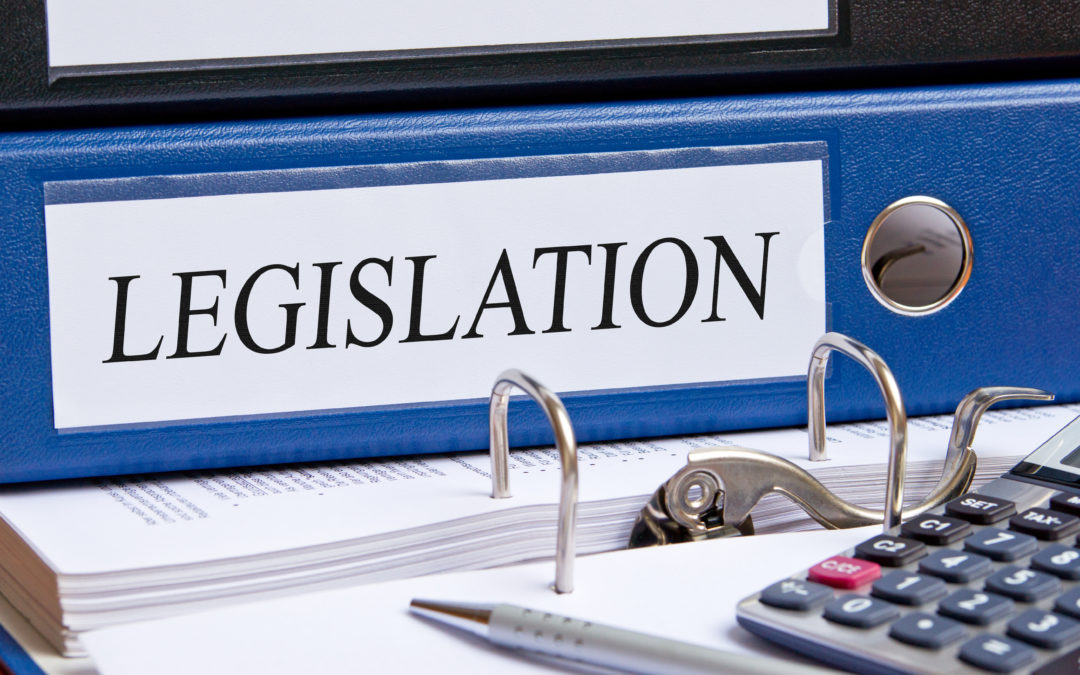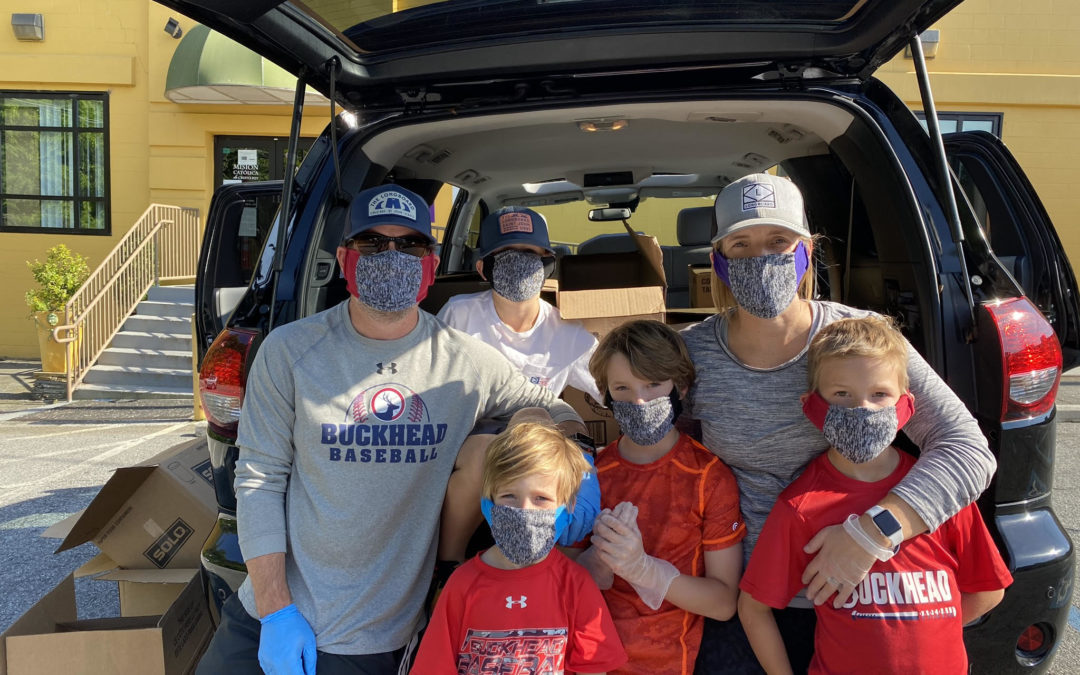


Hiring Well, Doing Good is ramping up in Columbus!
Hiring Well, Doing Good is ramping up in Columbus!
We recently received the alarming news that 40% of low-income households across the U.S. reported a job loss in March due to shutdowns from the COVID-19 pandemic. Closer to home here in Georgia, Columbus faces a rising unemployment rate (12.2% as of April) that is sure to spike to between 14% and 20% when April numbers are released.
In the middle of this economic disaster, Georgia Center for Opportunity’s Hiring Well, Doing Good (HWDG) program is expanding rapidly in Columbus. We are now open to forming partnerships with businesses and nonprofits in the region!
Read more: FULL PRESS RELEASE
What HWDG does
HWDG brings together community resources and technology to help un- and under-employed individuals achieve economic independence in three ways:
- Offering support: Individuals can easily search for local service providers who can help them overcome barriers to employment.
- Helping people find their strengths: Job seekers can identify their strengths and opportunities for employment through a soft skills assessment, a library of training programs, and a career pathway generator.
- Linking people directly with job opportunities: Job seekers can then connect with jobs relevant to their skill sets and personal preferences and geographic area.
Help for people like Marshayla
HWDG helps people like Marshayla Walker, who grew up in poverty in the greater Columbus region and struggled for years as an unemployed single mom. Marshayla heard about HWDG and attended training offered by Troy University, where she is currently majoring in psychology with a minor in global business. She said she is grateful for the support, encouragement, and resources HWDG offers and feels that she is now equipped to break into the competitive HR field upon graduation—with a new-found confidence that she can work her way up the career ladder and give her son opportunities she did not have growing up.

All Georgians Deserve to Participate in The Economic Recovery
All Georgians Deserve to Participate in The Economic Recovery
By Buzz Brockway
The Coronavirus pandemic has caused massive numbers of people to lose their jobs. Georgia’s official unemployment rate is 9.7%. However, as we reported last week , many others are not employed but do not appear in the common reported unemployment number.
A top goal of policy makers, and indeed all Georgians, should be to see people return to work as quickly as possible. Work is the best path to financial independence and a flourishing life.
As we endeavor to rebuild our economy, we must look to remove barriers people face in returning to work. One significant barrier many people face is a criminal record. For those with a criminal record who lost jobs due to the pandemic shutdown, finding work again could be difficult. For ex-offenders who didn’t have a job, the task of finding one just became even more difficult. Our research estimates that approximately 250,000 healthy working age men had no job prior to the pandemic. The reasons for their lack of employment vary, but for many, a criminal record is the barrier keeping them out of the job market.
What can be done to address this significant problem? In recent years, Georgia has focused on prison reentry programs meant to assist folks as they transition back into society. This work is important and must continue. But for those already back in society, other assistance is needed.
With Senate Bill 288, the Georgia Legislature has the chance to aid ex-offenders looking for work. The bill would allow an ex-offender, who has served his or her time and stayed out of trouble for a period of time, the opportunity to have certain non-violent misdemeanors expunged from the record. This will allow for an easier transition back into the workforce for a segment of Georgia’s population, who have paid their debt to society and stayed on the straight and narrow.
The benefit to our state in passing this legislation comes in several ways: Ex-offenders with jobs are less likely to recidivate. People who don’t get in trouble again cost the taxpayers less money and actually join the ranks of taxpaying citizens.
Ex-offenders with jobs are able to support their families, reducing poverty and lifting up the communities in which they live. If we want to break the cycle of poverty in our state, we must provide a path out for families. A job is the first step on the path to self-sufficiency and a flourishing life.
We are in the final week of the 2020 Georgia legislative session. There are many important issues being debated and policies being discussed to make our state better. At the top of the list should be providing a path forward for folks who need our help. SB 288 is an excellent step in the right direction.
To learn more about what Georgia Center for Opportunity is doing to help get Georgians back to work check out our Hiring Well, Doing Good initiative.

What’s Georgia’s Real Unemployment Number?
What’s Georgia’s Real Unemployment Number?
By Erik Randolph
Don’t be fooled by Georgia’s unemployment rate. While many are breathing a sigh of relief that barely one in ten Georgian’s are out of work, the reality is much worse.
Georgia’s unemployment rate (U-3) dropped to 9.7% last month—according to official numbers from the U.S. Bureau of Labor Statistics released today.
This number is adjusted for seasonal fluctuations, if that still makes sense given the current conditions. Otherwise, Georgia’s rate would be 9.5%, relatively close due to the time of the year. The Bureau of Labor Statistics regularly makes adjustments to smooth out the data from the impact of seasonal employment, such as temporary employment during the Christmas season, teenagers working as summer camp counselors, or landscaping jobs dependent on the growing season. The smoothing out of data is intended to help economists detect trends more easily.
The sense of relief comes from more dismal expectations that the unemployment rate itself could have been much worse—especially considering the unprecedented havoc on the economy from COVID-19—and from the encouraging news that Georgia is among the 38 states where the rates are coming down.
Georgia’s unemployment rate is among the lowest of the states. The nation’s rate was 13.3% (adjusted). Three states—Nevada, Michigan, and Hawaii—had seasonally adjusted rates of 25.3%, 22.6%, and 21.2%, respectively.
However, one in ten workers unemployed is still very high. There were 475,338 unemployed Georgians last month (seasonally adjusted). That number was 161,147 in February. The state went from a historic low unemployment rate of 3.1% (adjusted) to a record high of 12.6% (adjusted) in just two months.
The Loose Link
The situation is actually worse than what the unemployment numbers show. First, there is a loose relationship between employment and the labor force. The Bureau counts only those who are employed or actively looking for work as part of the labor force.
When the economy does well and jobs are more plentiful, the labor force grows in size because more people decide to enter or reenter the labor force. However, when the economy grows sluggish and jobs become harder to find, the opposite happens: the labor force shrinks.
The labor force participation rate demonstrates this well-known phenomenon. The chart below illustrates this relationship in Georgia. By definition, the labor force participation rate shows the percentage of workers in the labor force to the potential population of those who could be in the labor force, defined as all individuals age 16 and older who are not institutionalized, such as in prison, and—as the Bureau of Labor Statistics defines it—not in the military.
Of course, there are other factors at work. The aging population is pushing down the participation rate. An issue of great concern is the increasing proportion of individuals in their prime working age who have dropped out of the labor force altogether. This has been a topic of study from across the political spectrum, and recessions seem to only aggravate the trend.
The size of the recent labor force loss is astounding. A record number of 262,577 Georgians dropped out of the labor force in April. This is the seasonally adjusted number. The unadjusted number is 286,733.
The labor force bounced back just 0.1% in May, but still the net effect is that 256,208 individuals dropped out since February.
What this all means is that 570,399 Georgians either lost employment or dropped out of the labor force since February. If you add back in the 161,147 who were unemployed in February, there are at least 731,546 workers either unemployed or who dropped out, and 751,116 workers if we use unadjusted numbers.
However, we are still missing one part of the analysis. Prior to February, the labor force was growing and grew at a rate of 1.6% from the prior year (unadjusted). This implies that the labor force number should have grown over the last three months, perhaps to 5,208,019 in May (adjusted). This would make the combined unemployment/labor force problem closer to 15.0% (adjusted), or 14.8% (unadjusted).
It Gets Even Worse
The official unemployment rate does not capture everyone, including those who are working part-time but want to work full-time. For this, we must turn to the alternative measurement of labor underutilization known as U-6, the U.S. Bureau of Labor Statistics’ broadest metric. The national number jumped from 7.4% in February to 22.4% in April, and back down to 20.7% in May.
Unfortunately, the Bureau does not publish U-6 on a monthly basis for the states. For statistical reliability reasons, they only provide annual rolling averages each quarter year.
Most recently, Georgia’s annual rolling average U-6, ending the first quarter of 2020, was 6.7% compared to the national rolling average of 7.2%. This implies that Georgia’s U-6 is probably around 19.3%. Combining this number with those who dropped out of the labor force yields an impact well above 20%, probably around 25%, or one-in-four Georgians adversely affected, instead of just one in ten.
Note on Sources: All data came from the U.S. Bureau of Labor Statistics, except for the identification of the recessions that came from the Business Cycle Dating Committee of the National Bureau of Economic Research.
Erik Randolph is Director of Research at the Georgia Center for Opportunity. This article reflects his calculations, analysis and opinion and does not necessarily reflect that of the Georgia Center for Opportunity.
To learn more about what Georgia Center for Opportunity is doing to help get Georgians back to work check out our Hiring Well, Doing Good initiative.

To Rebuild Trust in Law Enforcement, We Must Reform Civil Asset Forfeiture Laws
To Rebuild Trust in Law Enforcement, We Must Reform Civil Asset Forfeiture Laws
By Buzz Brockway
In the wake of the tragic deaths of George Floyd, Breonna Taylor, Ahmaud Arbery, and now Rayshard Brooks, issues of racism and questions about use of force by police dominate the news. Understandably, emotions are high as people want answers and change. The Georgia Center for Opportunity has worked diligently over the years on issues of criminal justice reform. We see this as a key issue in pursuit of our goal of a society where everyone has the opportunity to flourish. We stand with our African-American sisters and brothers as they call for justice.
One key area in need of reform is called civil asset forfeiture. Civil asset forfeiture is a process in which law enforcement officers take assets from persons suspected of involvement in illegal activity without necessarily charging the owners with wrongdoing. The assets are thought to be either obtained as a result of illegal activity, or used in the commission of a crime. A civil court proceeding takes place to determine if the assets are to be forfeited and the funds used for law enforcement purposes.
As solutions are being offered, it is important to keep in mind the vital role law enforcement play in protecting the vulnerable and seeking justice for victims. Human flourishing and freedom cannot take place in unsafe communities. Therefore, law enforcement can and should be a key part of the solution to issues such as racism and discussions about the proper application of force against those suspected of criminal activity.
While the facts surrounding each of the tragic deaths listed above differ, one common thread moving through each case is lack of trust. Lack of trust that officers will use force responsibly, lack of trust that officers will properly deal with arrest warrants, and lack of trust that prosecutors will prosecute crimes equally, especially crimes committed against the African-American community. As we consider potential reforms, focusing our efforts on restoring trust between law enforcement and the communities they serve would seem to be efforts that could bear much fruit.
To that end, let me suggest we look at increasing transparency and oversight of Georgia’s civil asset forfeiture laws. The Georgia Center for Opportunity recently completed a study of these laws, how the system works, and made recommendations around increased transparency and accountability.
 Civil forfeiture of assets from law enforcement activities has become an important funding mechanism for many law enforcement agencies as well as multi-jurisdictional task forces crucial to fighting criminal gangs. However, the issue raises concerns about justice, freedom and prosperity. While a 2015 law made major improvements in civil asset forfeiture reporting requirements, it is not possible to know whether there was a conviction in the case that resulted in the property being forfeited. To restore trust, collecting this information is crucial.
Civil forfeiture of assets from law enforcement activities has become an important funding mechanism for many law enforcement agencies as well as multi-jurisdictional task forces crucial to fighting criminal gangs. However, the issue raises concerns about justice, freedom and prosperity. While a 2015 law made major improvements in civil asset forfeiture reporting requirements, it is not possible to know whether there was a conviction in the case that resulted in the property being forfeited. To restore trust, collecting this information is crucial.
Additionally, understanding the outcome of the case would allow us to determine if Georgia civil asset forfeiture laws violate the 8th Amendment prohibition on excessive fines. The recent Supreme Court decision in Timbs v. Indiana makes it clear that the 8th Amendment applies to the state. As it relates to civil asset forfeiture, is it an “excessive fine” to forfeit a car worth several thousand dollars for a minor drug conviction? To restore trust in law enforcement, this question must be answered.
Rebuilding trust between law enforcement and the community will take time and many policies and practices must be reviewed and debated. Increasing transparency and accountability in Georgia’s civil asset forfeiture laws is an important step in the right direction.
To learn more about Civil Asset Forefeiture in Georgia click here.
CAN THE POLICE REALLY CONFISCATE MY PROPERTY WITHOUT CONVICTING ME OF A CRIME?

How Local Businesses are Helping Workers and Feeding the Hungry During the Pandemic
Restaurant workers and the impoverished are two categories of people particularly hard hit by the coronavirus pandemic and its economic devastation. An estimated 8 million restaurant workers have been out of work nationally, while 39 percent of households earning $40,000 or less per year have lost work. Specific data for Georgia are now available yet, but we imagine they will be similar.
Creating jobs while feeding the hungry
But in the Atlanta area, local business and community leaders are coming together to help both populations in an inventive way. We’d like to introduce you to the Compassion Kitchen Project. Put together by the Cathedral of Christ the King in Atlanta and the Knights of Columbus, the initiative provides much-needed work for displaced restaurant workers while stemming the tide of rising food insecurity in the metro area.
Here is how it works: Donations to the project are passed along to local restaurants, who then in turn make meals for local nonprofits and homeless shelters to feed the hungry. Some of the allied nonprofits include CHRIS180, Nicholas House, Catholic Charities Atlanta, and Together We Rise.
The Compassion Kitchen Project also delivers food bags—called “compassion to-go” bags filled with items like protein cars, chips, canned meats, and bottled water—for people living in transient housing or out of their cars.
‘A good mixed with a good’
Gene Rice, a local commercial real estate developer, has been a key part of the project. He shared with us that many of his business clients are restaurants and brew pubs. The idea with the Compassion Kitchen Project was to get a double bang for the buck—help restaurant workers on furlough while feeding the hungry.
“It’s a good mixed with a good,” Gene shares. “It’s helping a business getting kicked in the teeth right now, getting hourly workers back in the kitchen, and helping folks who are hungry.”
Within a week of getting up and running, the initiative had already served 1,200 meals and raised $30,000. To date, a total of 17,232 have been served.
Civil society in action
This is an example of why civil society is key as we recover from the COVID-19 pandemic and its economic devastation. When businesses, nonprofits, churches, and other community institutions partner together for good, we see amazing results. Learn more about our Hiring Well, Doing Good initiative here.





